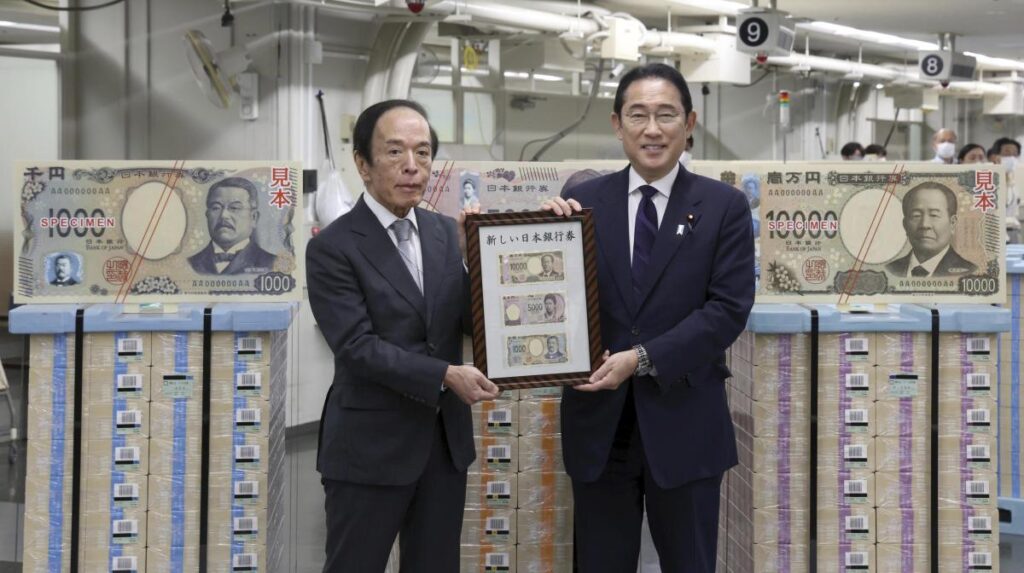TOKYO (AP) — Japan on Wednesday issued its first new banknotes in two decades, yen notes equipped with 3D hologram technology to prevent counterfeiting.
Prime Minister Fumio Kishida hailed as “historic” the state-of-the-art anti-counterfeiting features of the new 10,000 yen, 5,000 yen and 1,000 yen notes.
“I hope people will like the new bills and that they will boost the Japanese economy,” he told reporters at the Bank of Japan.
Although the new notes were released with much fanfare, the money already in use remains valid. In fact, people still need older notes to use most vending machines and pay for bus tickets, local media reported.
Kishida noted that the people in the posters celebrate Japanese capitalism, women’s equality and scientific innovation.
The 10,000 yen note, worth about $62 at the current exchange rate, features the face of Eiichi Shibusawa, known as “the father of Japanese capitalism,” a key figure in building the modern Japanese economy. He is credited with founding hundreds of companies.
The 5,000 yen note, worth about $30, features Umeko Tsuda, a pioneering feminist and educator who founded a college. The 1,000 yen note, worth about $6.20, features physician and bacteriologist Shibasaburo Kitasato, who played a major role in research into tetanus and bubonic plague.
The back of each note features Tokyo Station, wisteria and Mount Fuji, respectively, by ukiyo-e artist Katsushika Hokusai.
The new banknotes also have a larger font size, making them easier to read, especially for the country’s ageing population.
By the end of March next year, nearly 7.5 billion new banknotes will have been printed, according to the government. The amount of money in the new notes issued in a single day is estimated at 1.6 trillion yen ($10 billion).
It may take some time for ordinary people to get their hands on the new notes. They will first go to banks and other financial institutions. Then they will be distributed to ATMs and shops, the Bank of Japan said.
The majority of transactions in Japan are still done with cash, and cashless payments are taking longer to kick in than in many other countries.
“While the world is increasingly moving to cashless interactions, we believe cash remains important as a way to securely settle payments anytime, anywhere,” said Bank of Japan Governor Kazuo Ueda.
___
AP videographer Mayuko Ono contributed.







